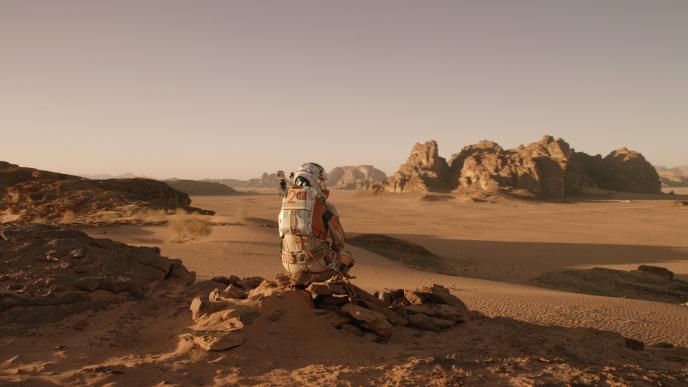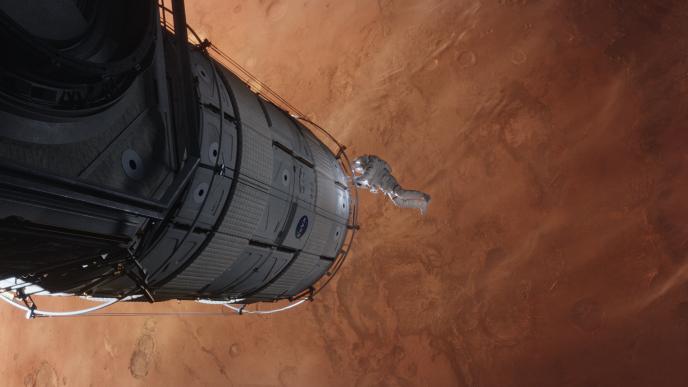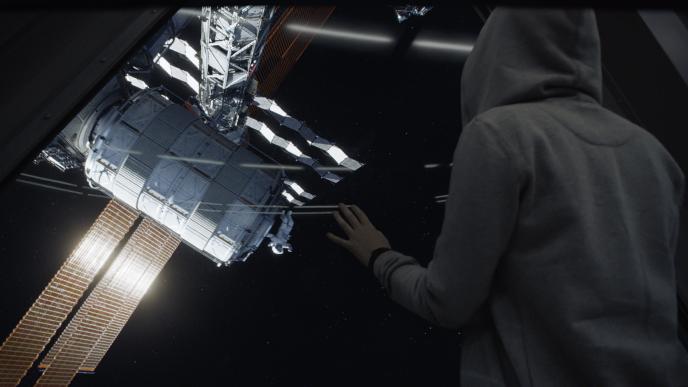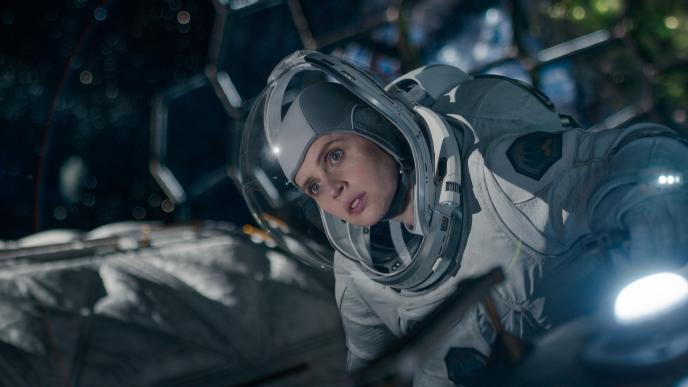
The Martian
Framestore was awarded 338 outer-space shots on The Martian, directed by Ridley Scott and starring Matt Damon in the leading actor role. Informed by the heavily-researched detail of Andy Weir’s novel, and with significant input from NASA on genuine contemporary technologies, Framestore revelled in the opportunity to further refine the CG and VFX techniques needed to portray a realistic space setting for the year 2035.

Everything we did, we tried to ground in reality. It’s sci-fi, but it’s real – the production design isn’t overtly flashy, and there is minimal design from scratch.
Hermes Takes Flight
The build of the Hermes was a major focus for Framestore’s teams. At 225m in length, the spaceship is the biggest and most complex created by Framestore to date, and is more than double the size of the current International Space Station (ISS). Early pre-visualisation and production design defined its measurements, with consideration for practicalities such as the time it would take the astronauts to move around it, and the space needed to store supplies for a mission as long as Ares III. Everything was grounded in reality; the film may be sci-fi, but the content is true to life, with minimal design from scratch.

The Red Planet
Designing an entire planet was another task for Framestore, responsible for the look of Mars throughout. With a key opening shot and various space establishers, it was again important to strike the balance between accuracy and cinematic beauty. Framestore knew that they would use the same technology as for the Earth in Gravity, consisting of a volumetric render of extremely high resolution texture information, combined with dust and atmospheric clouds. The challenge lay in finding adequate reference material for Mars, for which not a great deal of movie-resolution photography existed. The team used a combination of photography and satellite data, in a fairly novel way, to get the detail they needed.

Working with Ridley Scott was a real pleasure. His film-making process, the detailed storyboards and pre-visualisation that he’s known for, made this such an interesting project for us.
The Martian proved a fantastic achievement for Framestore, who enjoyed a collaborative working environment with both the director and his team, and between internal departments. Naturally, it was important for the film to maintain a cinematic beauty, alongside the dedication to accuracy throughout. Cultural reference points were frequently drawn from 2001: Space Odyssey, which set a cinematic benchmark for all as to what space looks like; Director Ridley Scott also drew inspiration from Chesley Bonestell’s sci-fi illustrations from the 1950s/60s, adding a retro space look into the design mix.
The development of new technologies and the triage process brought together artists across departments, making for a fluid and efficient workflow between modellers, trackers, compositors alike. The making of the film allowed Framestore to learn and grow, delivering a super high quality show in the process.

Reviews
The Martian hits a powerful sweet spot: blending tense action, captivating science, and beautiful 3D cinematography into an emotional character story - Screen Rant
An enthralling and rigorously realistic outer-space survival story - Variety






